Description
Agile Project Management (AgilePM) Practitioner

AgilePM Practitioner builds on the AgilePM Foundation and is based on the Dynamic Systems Development Method (DSDM) first introduced in 2010 by Agile Business Consortium.
Being the world’s leading certification for Agile Project Management and consequently, it has had more than 130,000 exams completed globally.
Overview of AgilePM
As a result, the Handbook offers a practical and repeatable methodology by achieving an ideal balance between the standards, rigour and visibility required for good project management, and the fast-pace, change and empowerment provided by Agile.
Agile Project Management offers a structured and scalable corporate Agile framework based on proven practice.
Why organisations and project professionals consider AgilePM to support their adoption of agile project management practices?
A tried and tested corporate approach
The methodology is essentially a project manager’s subset of the Agile Business Consortium’s wider Agile Project Framework. The framework, established for over 20 years and regularly refreshed to reflect current practices and business requirements, provides governance and rigour along with the agility and flexibility demanded by organisations today. Consequently, a wide range of organisations across many industries and sectors have adopted AgilePM and the underlying Agile Project Framework.
Addressing the full project lifecycle (beyond product development
Often the informality of many of the agile approaches is daunting and as a result are perceived as too risky for organisations delivering projects and programmes. However, AgilePM offers a mature approach that, whilst offering agility and flexibility, retains the concepts of a project, project delivery and project management.
Inclusion of change management activities
AgilePM goes further than other project management approaches, most importantly by using specific processes to consider how to implement the deliverables.
This deployment step is integral to the lifecycle and ensures that there is a focus on how to support users once the deliverables are available.
Quality & governance controls
One of AgilePM’s underlying principles is Never Compromise Quality.
Firstly, agreement of high-level acceptance criteria occurs throughout the Agile Project Management project lifecycle. This initially is defined at the feasibility stage before objectives for each stage of product/solution development. Secondly, the responsibility for ensuring the outputs meet quality criteria is a core part of all roles; so everyone knows what the standard should look like as quality expectations are understood before any work is undertaken. As a result, this is a far more efficient approach than rejecting work after it has been created as it prevents rejection of unclear requirements. Collectively, this is geared to ensuring the solution will meet the business need and the project objectives.
Risk management in AgilePM
AgilePM provides practical ideas for managing risk which directly address many of the common risks for projects. Above all, this includes preventing missing fixed deadlines or having unclear and volatile requirements.
The Project Approach Questionnaire (PAQ) provides a clear, shared understanding of project risks and their mitigation.
Clear roles & responsibilities of AgilePM
AgilePM recognises this that people working together effectively are the foundation of any successful project. Firstly, by assigning clear roles and responsibilities to each person in a project, representing the business interests, the solution/ technical interests, the management interests and the process interests. Secondly, everyone involved in an AgilePM project works closely together breaking down potential communication barriers. Thirdly, acknowledging the best solutions emerging from self-organizing, empowered teams.
Popular agile practices incorporated in AgilePM
AgilePM incorporates and encourages a range of popular agile practices to support effective product and solution development.
These include:
Firstly, MoSCoW Prioritisation provides a technique for helping to understand and manage priorities. Secondly, Time-boxing, ensures that objectives met in a fixed period of time. Thirdly, Iterative Development, is a process in which the evolving solution, or part of it, evolves from a high-level concept to something with acknowledged business value. In conclusion, these practices ensure that focus is maintained on the delivery of value throughout the project.
Integrated with existing processes:
AgilePM works alongside more formalised project management and quality approaches e.g. frameworks such as PRINCE2® and ISO9001.
AgilePM Practitioner accredited training and certification
Accredited training and certification will help individuals to:
- Apply the underpinning philosophy and principles of Agile Project Management in a project situation
- Appropriately configure the lifecycle of an Agile project to a given scenario
- Identify and apply popular Agile techniques in a project situation. For instance, MoSCoW prioritisation, iterative development and time-boxing
- Assign roles and responsibilities within an Agile project
- Understand the mechanisms for governance and control of an Agile project
- Plan how to test, estimate and measure progress in an Agile project
- Describe and apply the Agile approach to managing requirements.
Who is the Practitioner Level for?
- Certified Professionals AgilePM Foundation.
- Agile team members who want to become Agile Project Managers.
- Individuals pursuing the AgilePM Practitioner Certificate.
These are the key things you will learn from AgilePM Practitioner:
- How to apply a variety of agile practices to a project, for example, workshops, the MoSCoW technique to define project priorities, iterative development and modeling.
- How to test, estimate and most importantly evaluate profit delivery in an Agile project.
- Facilitation and support mechanisms within an Agile project.
- The agile approach to manage and prioritize requirements.
Exam Format:
- Objective examination. 4 questions (20 points per question).
- 40/80 points required to pass the exam (50%).
- Duration 2.5 hours.
- Open book (only the official AgilePM manual is allowed).
Click here for more information on AgilePM Foundation
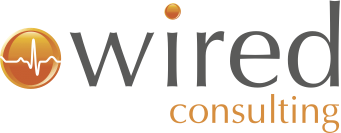
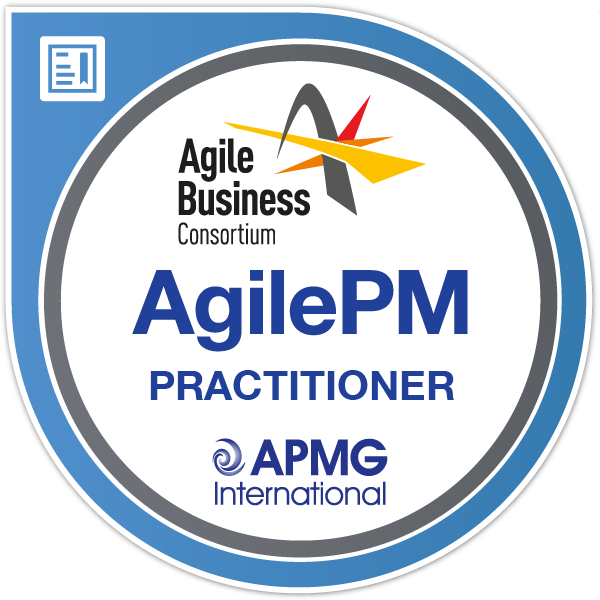

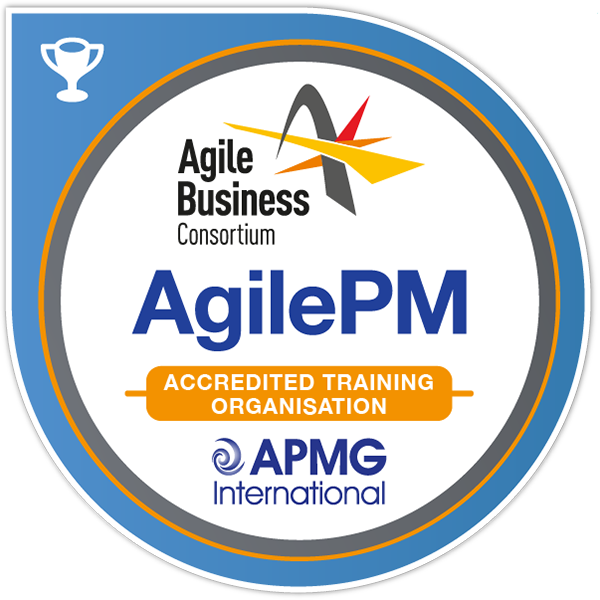


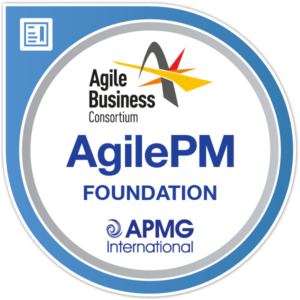
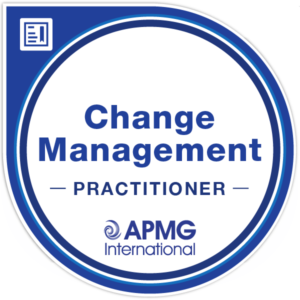
Reviews
There are no reviews yet.